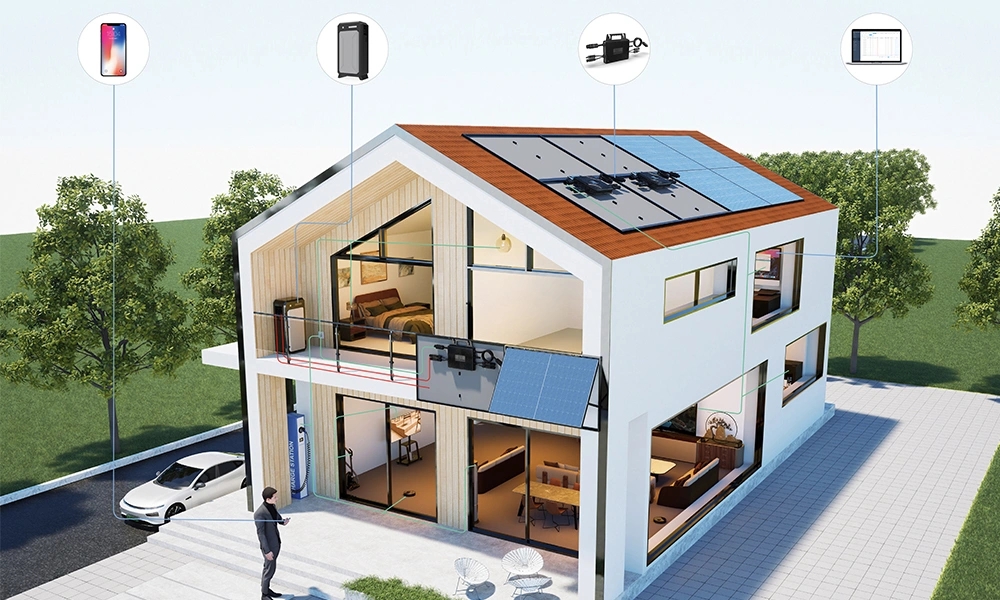- All
- Product Management
- News And Information
- Presentation
- Enterprise Branch
- FAQ
- Enterprise Video
- Enterprise Atlas
The Installation Process of Microinverters
Release time:
2024-04-24 00:00

1.Safety Preparation:
Ensure all related power sources are disconnected before starting the installation to prevent electrocution or other safety accidents.
Prepare the necessary safety gear, such as insulated gloves, safety belts, and helmets.
2.Installing Solar Panels:
Identify suitable locations on the roof for the solar panels. These are typically unobstructed spots that can receive maximum sunlight.
Use mounting racks to secure the solar panels, ensuring they are firmly attached to the roof.
3.Installing Microinverters:
Install a microinverter at the back of each solar panel or near the panels.
Secure the microinverters on the solar panel rack or an appropriate support structure to ensure stability and ease of maintenance.
4.Wiring:
Connect the output wires from the solar panels to the input of the microinverters.
Ensure all connections are tight and waterproof, using appropriate junction boxes and waterproof seals.
5.Connecting to the Household Grid:
Connect the output from the microinverters to the home’s distribution panel.
Often this involves installing a new bi-directional meter to monitor the electricity generated and consumed.
6.System Testing and Commissioning:
Turn on the power and check the operation status of each microinverter and solar panel.
Use professional tools, such as a solar monitoring system, to ensure all components are functioning properly and adjust them to optimal operating conditions.
7.Cleanup and Site Finalization:
Ensure all tools and materials are properly cleaned up and all wires and components are secured.
Check the integrity of the roof to ensure that it has not been damaged during the installation.
8.User Training and Documentation Handover:
Explain to the user how the system operates and the knowledge required for daily maintenance.
Provide all necessary documents, such as installation manuals, warranty cards, and operating instructions.
News












